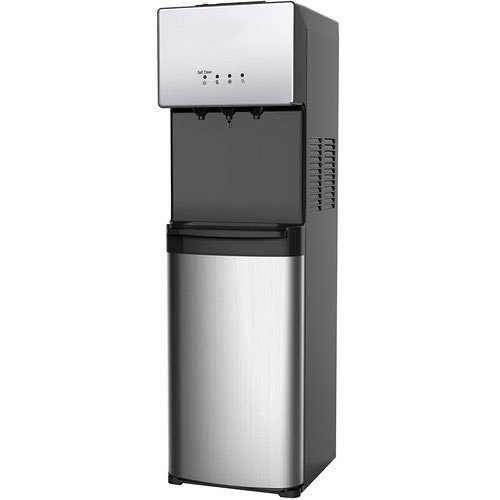Water dispensers can be very useful for every home, and they have a lot of general benefits, including avoiding the time spent making boiling water, and promoting the habit of drinking healthy. They also reduce the waste of small bottles that are found in the.
They’re powered by electricity. They include tanks (or tanks) that can be used for hot and cold water, a refrigerating system and a heater. They also come with advanced hygiene features that can prevent cross contamination.
UV Filtration
Ultraviolet (UV) filtering systems for water make use of UV rays to kill bugs, viruses, parasites and other harmful microorganisms which are able to be harmful to water. They’re simple to maintain, and have little affect on the flavor of the water.
UV radiation passes through the outer layers of the cell’s body. It damages the nucleic acid of the organism’s DNA, disrupting reproduction. It becomes impossible for an organism to reproduce and spread the virus onto other cells.
In addition to the normal lighting bulb replacement, maintaining of a UV-based system is pretty minimal. The UV lamp is protected with a quartz sleeve which allows light wavelengths to pass through, but also blocks the passage of other particles. The sleeve must be inspected and replaced regularly, typically every two years.
The greatest benefit of UV is that it does not include any harmful chemicals in the water. It’s also easy to operate, making it ideal for areas that are not accessible as well as for emergency situations when water requires to be cleaned and disinfected fast. But, it is not able to get rid of dissolved impurities like salts, heavy metals or chlorine from the water and is best used in conjunction with other filtration methods. In the ideal scenario, a pre-filter would be used to ensure that all the water flowing into the chamber is free of impurities. This is particularly important if you are using the untreated source of water such like a lake or well.
Carbon Filtration
Activated carbon is one of the most common type of filter to get rid of taste and odor from water. It works by adsorbing chemicals that don’t stick to the water. This includes volatile organic compounds (VOCs) such as chlorine, phosphorus and hydrogen sulfur dioxide, which cause unpleasant tastes and odors in drinking water.
During the adsorption process, carbon attracts these chemical pollutants on its surface, like a sponge absorbs gas through its pores. Carbon filters are classified based on their size and the number of particles they remove in microns. If you’re looking to purchase a carbon-based filter, you should try to go with a low micron rating to avoid removing all beneficial minerals from the water.

It’s crucial to maintain the carbon filter at least once a year and this can be achieved by shutting off the water faucet and let it go through one of the cycles to backwash. This will help prevent bacteria and other contaminants from accumulating in the difficult-to-access parts of the dispenser, that can result in poor-quality and unclean drinking water. Clean filters will be sure you don’t see mold growth in the water spout in your dispenser. Mold can cause dangerous organisms like Salmonella as well as E. coli.
Sediment Filtration
Sediment filters use mechanical filtration in order to physically prevent undesirable particles from entering your water supply. They are like screens doors – you would like the fresh breeze to circulate across your property, but you don’t want dirt and leaves blowing in with the breeze.
A sediment filter’s micron score determines the size of particles it’s able to eliminate from your water supply. For a rough guideline an a 5-micron filter can remove any visible particles by the naked eye in contrast, a micron-sized filter will eliminate anything too small to be seen without a microscope.
These particles can cause a blockage in your household appliances, may loc nuoc uong nong lanh which can cause chokes on fixtures and valves or shortening their service life. They also can prevent different filtration systems from functioning at full efficiency. The whole-house sediment filter will keep your home running without a hitch and also save you money in the long run.
The majority of sediment filters are created from plant cellulose fibers. They have a large surface area and trap sediment in the layers of materials. They can be made of string or pleated depending on their design and the type of material used. Pleated filters, that are accordion-shaped, have multiple filter media layers and a huge surface area. They can also be washed and reuseable. String-wound filters are made of string that is tightly wound with polyester, cotton or polypropylene that is then wrapped in layers and wound around a core. The filters produce one with a gradient, in which the exterior layer is able to hold bigger particles while the inside layer holds more fine particles.